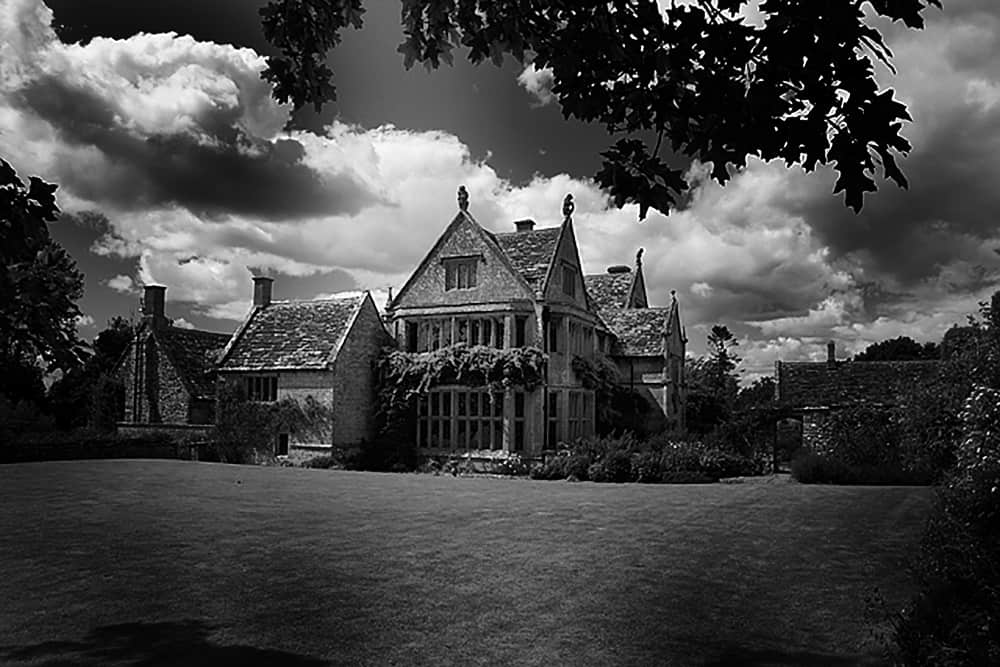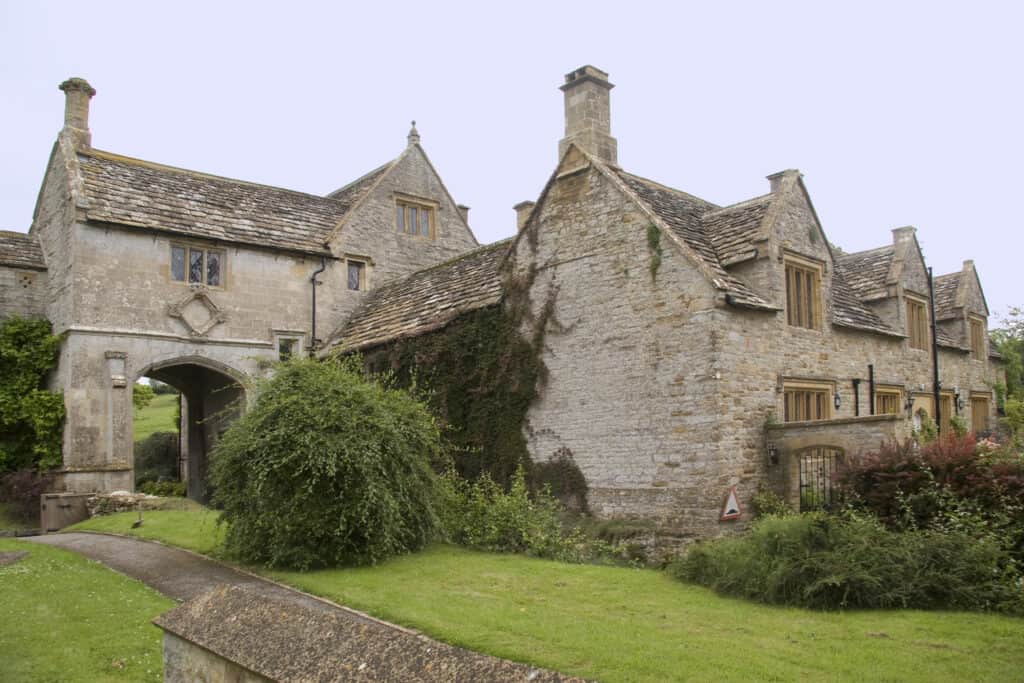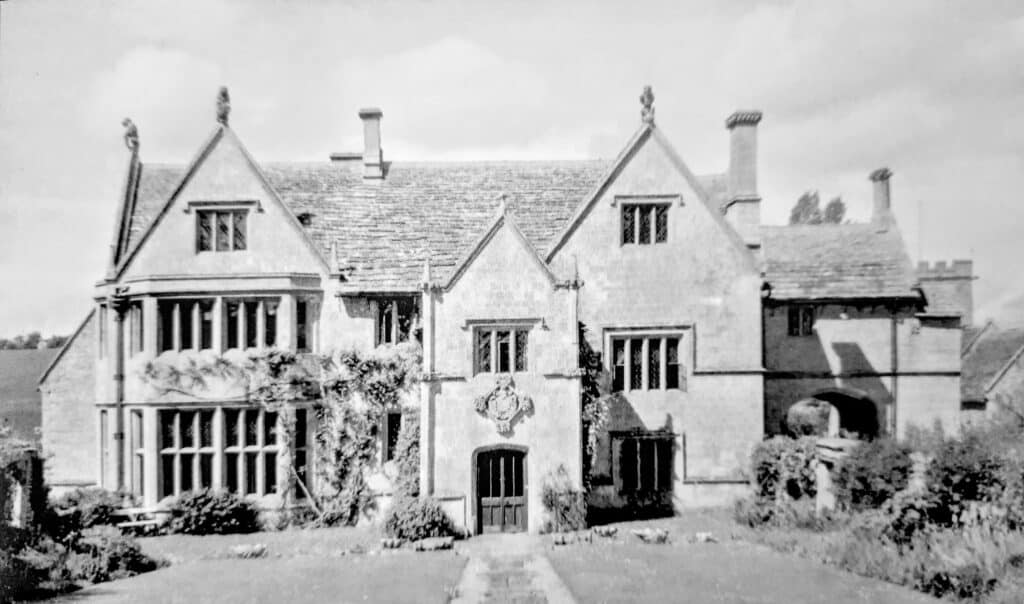In this month’s Looking Back column, Roger Guttridge questions the spooky stories that have long been associated with Sandford Orcas Manor

As Dorset manor houses go, mid-16th century Sandford Orcas Manor near Sherborne is among the most exquisite in the county.
Google it, however, and it’s not its fine Tudor architecture that makes the headlines but its reputation as a haven for ghosts and poltergeists.
Top hit from my search took me to the Haunted Britain and Ireland website, which describes Sandford Orcas as ‘an eerie-looking building, the grey stone walls of which give the appearance of being every inch the haunted house of tradition’.
‘Indeed,’ the site adds, ‘so many ghostly tales swirl around it that many people consider it the most haunted house in England. Intrepid ghost-hunters really have their work cut out with the 14 ghosts that are said to reside there.’
Around 40 years ago, I was privileged to attend committee meetings of the Somerset and Dorset Family History Society at Sandford Orcas Manor, whose future owner, Sir Mervyn Medlycott, happened to be our founder and chairman.

A modern history
It was from him that I learned that there was a rather more down-to-Earth story behind the house’s reputation as ‘the most haunted house in Britain’.
The tale dates back to the period from 1965 to 1978, when Mervyn’s uncle Sir Christopher Medlycott, the eighth baronet, leased the house to Colonel and Mrs Francis Claridge.
From the start, the Claridges claimed to have heard the sounds of ‘beautiful music’ from a spinet or harpsichord and the noise of footsteps, voices and moving furniture.
They described various ghostly figures, including one lady in red and another in white, a young woman in black, a farmer in a white smock, a young man looking at a stained-glass window, a screaming sea cadet, an Elizabethan walker … and a fox terrier!
As time went on, the spooky sightings became ever more bizarre. There was the story of the ghostly priest who tried to smother guests with his cloak.
Even more sinister was the tale of a lanky Georgian footman, who had allegedly preyed on serving wenches when alive but in death smelt of decaying flesh and would not appear to any woman who was not a virgin.
To support these stories, Colonel Claridge produced a succession of witnesses and back-up stories.
The man in the smock was said to be the ghost of James Davidge, a tenant farmer, who allegedly hanged himself under the gatehouse arch.
The young screaming sea cadet was said to have been confined to his room for life after killing a fellow cadet while at Dartmouth Naval College.
Former owner Sir Hubert Medlycott was also said to return to haunt his one-time abode.

Paying guests
The Claridges’ claims attracted national headlines, which in turn lured an ever-growing stream of paying visitors to Sandford Orcas.
The tenants said they were raising money to build a cancer research laboratory.
The visitors included Britain’s most famous ghost-hunter, Peter Underwood, founder of the Ghost Club, who led a coach party to Dorset in 1975.
‘Colonel Claridge and his wife entertained the party with some fantastic stories,’ Underwood reported.
‘The huge gargoyles on each gable laughed in the moonlight; there was the sound of rattling chains every night; there was a room in which it was impossible to take a photograph; there was a phantom that appeared regularly seven nights running each year; a room that screamed; a room where “every night a man parades up and down, his footsteps heavy and clear…”’
In his next sentence, Underwood got to the point.
‘Unfortunately,’ he wrote, ‘the ghosts multiplied to such an extent that credulity was stretched beyond breaking point; erroneous dates and “facts” were paraded; dubious photographs were exhibited; publicity was welcomed …’
The Ghost Club’s president was one of a growing army of sceptics, among whom were the Medlycotts themselves.
In 2009, when I interviewed Sir Mervyn for my book Paranormal Dorset, he made it clear he was tired of the whole business and
I promised to try and put the record straight.
‘People keep asking if they can hold all-night vigils here but the whole thing was made up,’ the ninth baronet told me.
‘I think some apparitions are genuine and I wrote in my history of the village about the figure of a woman seen at the Mitre Inn.
‘But the stories of the Manor started and finished with the Claridges, and there have been further stories made up by journalists since to keep the ball rolling.
‘Claridge needed to get more visitors to the house and this was a nice, cheap way of doing it.’
Sir Mervyn humorously added that Colonel Claridge, who died more than 30 years ago, was ‘six feet under in the churchyard and hasn’t appeared himself yet’.
Sir Mervyn himself sadly died in 2021, aged 74.



